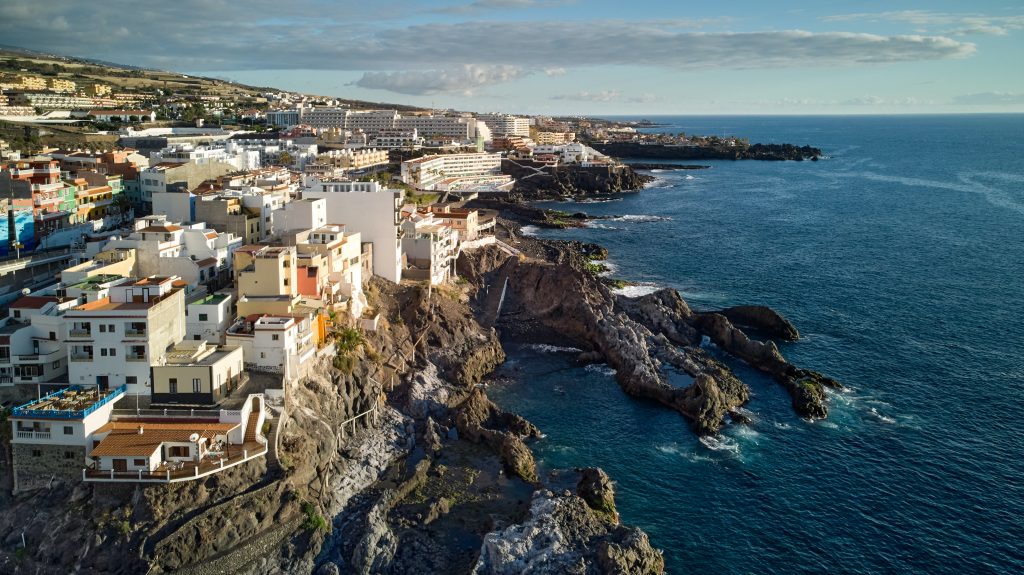Tenerife Holidays – North vs South

Tenerife is one of Great Britain’s favourite holiday destinations. The weather is warm, the nature is stunning, and the beaches are incredibly inviting. However, you might get an entirely different holiday experience depending on where on the island you choose to stay. This is not a bad thing at all, considering how it gives us more options to pick from.
Here’s what you should know about a holiday in the north versus the south of Tenerife.
Basics about Tenerife
Tenerife is the most visited island among the Canary Islands and one of Spain’s top tourist destinations. Naturally, the island does its best to accommodate these visitors, resulting in 78% of its GDP stemming from the service sector. For us visitors, this means they are more than prepared to help us enjoy our holiday. There is a great infrastructure and many beautiful resorts, more homely or even luxurious holiday lettings across Tenerife. You can check out your options on Holidu.co.uk and use their filter function to find exactly what you need.
There are beautiful beaches, nature reserves, and hiking trails across the island. Many will be happy to hear that Tenerife is light pollution free, meaning they reduce light at night to a minimum, making it a great destination for stargazers.
Finally, there are many entertainment options, such as water parks, zoos, golf courses, and more.
What is a better Holiday Destination: North or South Tenerife?
The south of Tenerife has higher tourist numbers. Whether you prefer the south or the north, however, is a question of personal taste. Both have great resorts, attractions, and activities. Here are some of the main differences:
Tenerife’s Geography
Tenerife is the result of a volcanic eruption about twelve million years ago. Originally, therewere three different Islands, now known as the Anaga, Teno, and Valle de San Lorenzo Mountain ranges, that got fused by the volcano Teide’s activity over time. The volcano itself is at the centre of the island, with a 17 km (11 miles) long crater and the highest elevation in all of Spain (3,715 m/12,188 ft above sea level).
Because of its volcanic origin, the island’s landscape is rugged, uneven, and steep at times. This creates the perfect circumstances for multiple diverse climates and biotopes. Tenerife is home to pine forests, volcanic landscapes, semideserts, and subtropical vegetation all at once.
Geography in the North vs in the South of Tenerife
In general, Tenerife has a dry, warm climate. However, there are multiple climatic areas, depending on your location. This is a result of the island’s steep rise and height of Mount Teide.
Meteorologists call this phenomenon “microclimate”. A microclimate is a localized atmospheric condition that can pop up without affecting or extending to nearby regions. Meaning, two different weather conditions can happen just a few kilometres apart. If you were to take the right paths, you can experience just about any climate, from the heat of semideserts to the snow-capped mountaintop of Mount Teide in one day.
➔ Overall, the climate in the south of Tenerife is arider and hotter. Rain and clouds appear less frequently.
➔ The north, by comparison, is slightly colder and more humid. The north and northeast of the island get impacted by the trade winds, whose humidity gets
condensed in these areas. This leads to cloud banks resting at 600 to 1,500 m (2,000 – 5,900 ft).
Additionally, the rain shadow effect keeps precipitation from hitting the south, since it is shielded by Mount Teide. As a result, the windward northwestern side of Tenerife receives 73% of the island’s entire rainfall. At low altitudes, the climate in the south is described as arid, while the climate on the northwestern side is considered Mediterranean.
Because the rain clouds precipitate before they can cross the mountain, the centre of the island surrounding Mount Teide is characterized by pine forests and subtropical cloud forests on the north western side.
Beaches & Hiking
Based on these geographical conditions, some outdoor activities can differ depending on your location.
➔ While the beaches in the south of Tenerife are white and picture-perfect, the north has beautiful black volcanic sand beaches.
➔ Both north and south have amazing hiking trails. Generally, the north offers hikes through more mountainous areas with lush vegetation. However, hiking through subtropical forests in the humid part of Tenerife can be a challenge.
➔ The vegetation in the south has less to offer, but some of the south’s hikes are the island’s most famous, including the hike to the top of Mount Teide. These, however, can be challenging both because of the trails themselves but also because of the dry heat.
Tourism If you want to find less populated areas, you should stay away from tourist hotspots. Most famously, well-developed resort towns in the south, such as Los Cristianos, are overrun with tourists from Germany, Great Britain, and other countries.
The south of Tenerife is “the touristic part” of the Island. However, that also means it has the most tourist amenities, with plenty of activities for several tastes. It also has more stable weather.
Conclusion
Whether you want to stay in the north or the south of Tenerife is a question of personal taste. In both areas, you can find great amenities, activities, and attractions. While the south is typically more touristy, you can also find more quiet and traditional spots there. The other way around, you will find great resort towns in the north as well.
There are, however, some factors that separate both places. If you dislike humid weather and are looking for stable hot and dry weather, the south of Tenerife is for you. If you want to enjoy the lush vegetation and “colder” weather, go visit the north. In the end, these differences are great, considering how small the island is. If you’re up for it, you can experience all of it during one holiday and find out what you prefer first-hand.


